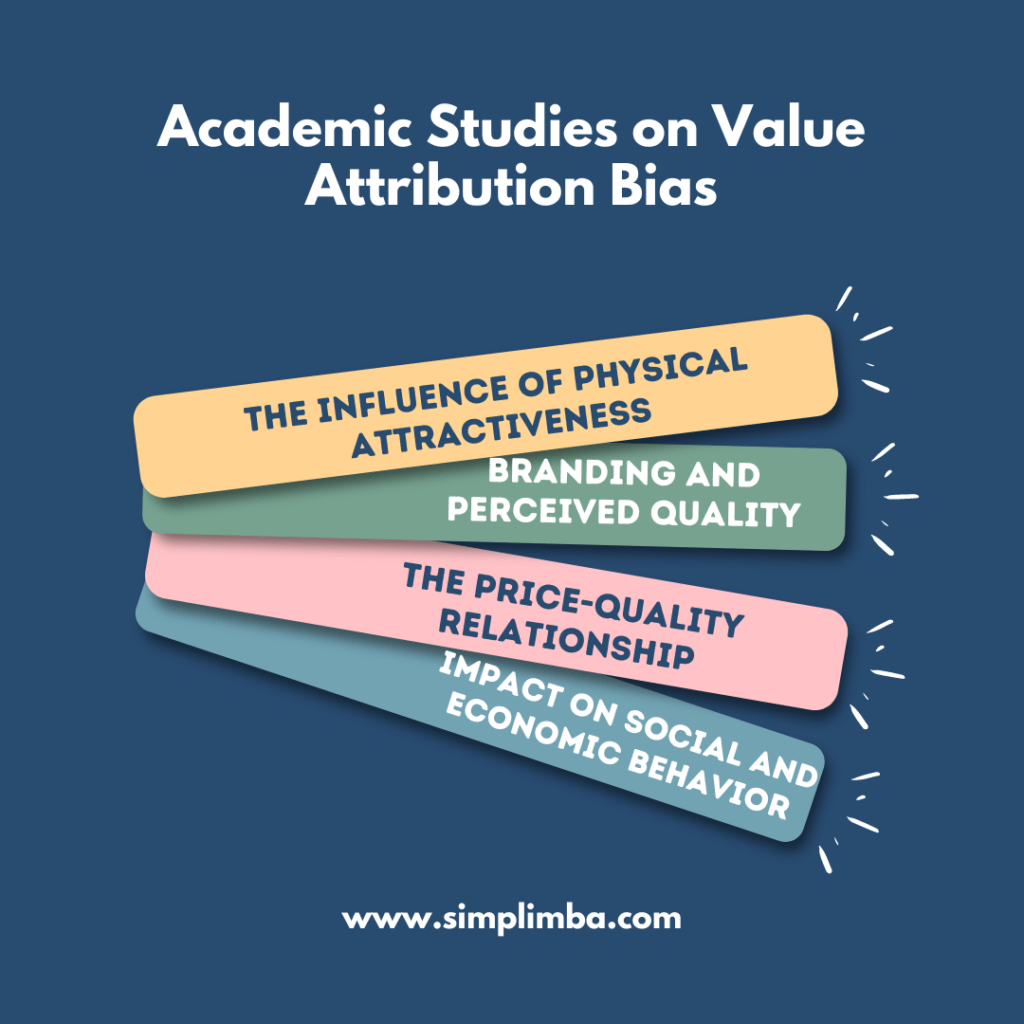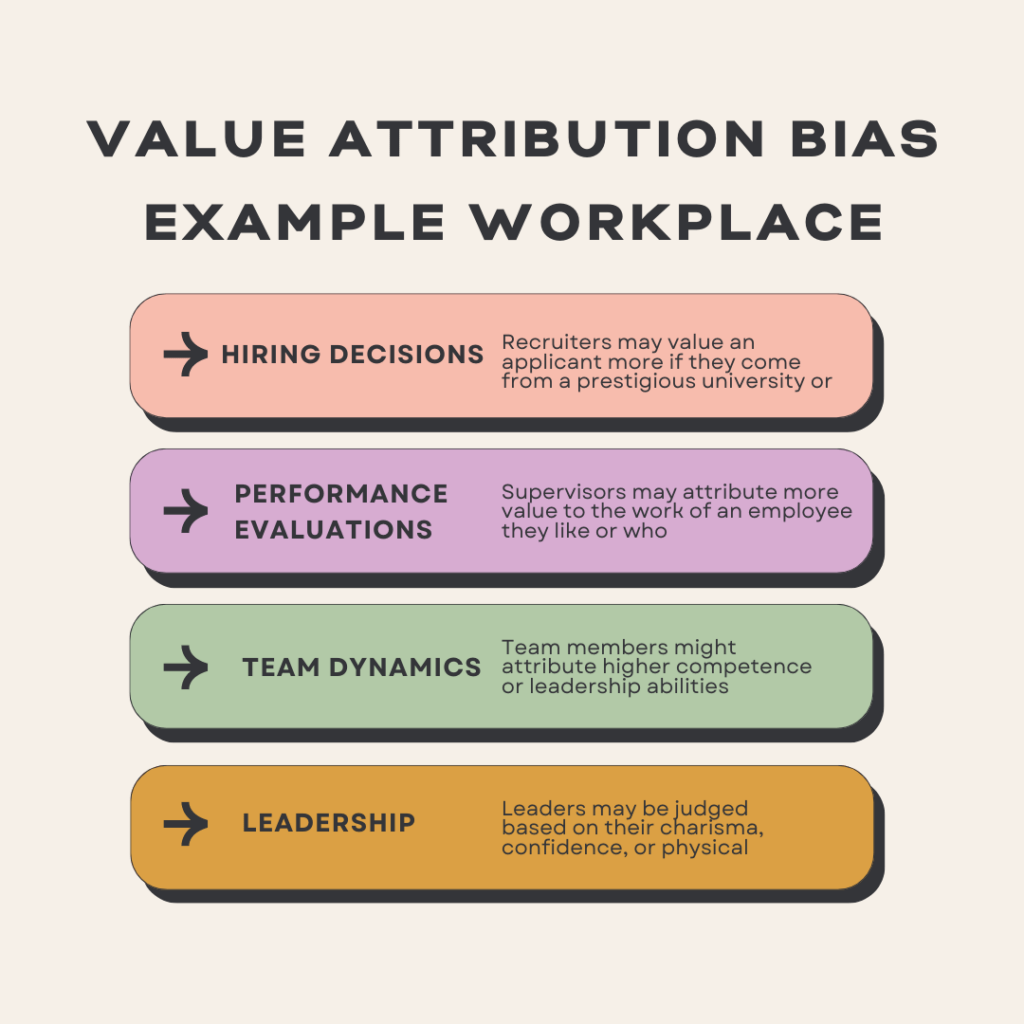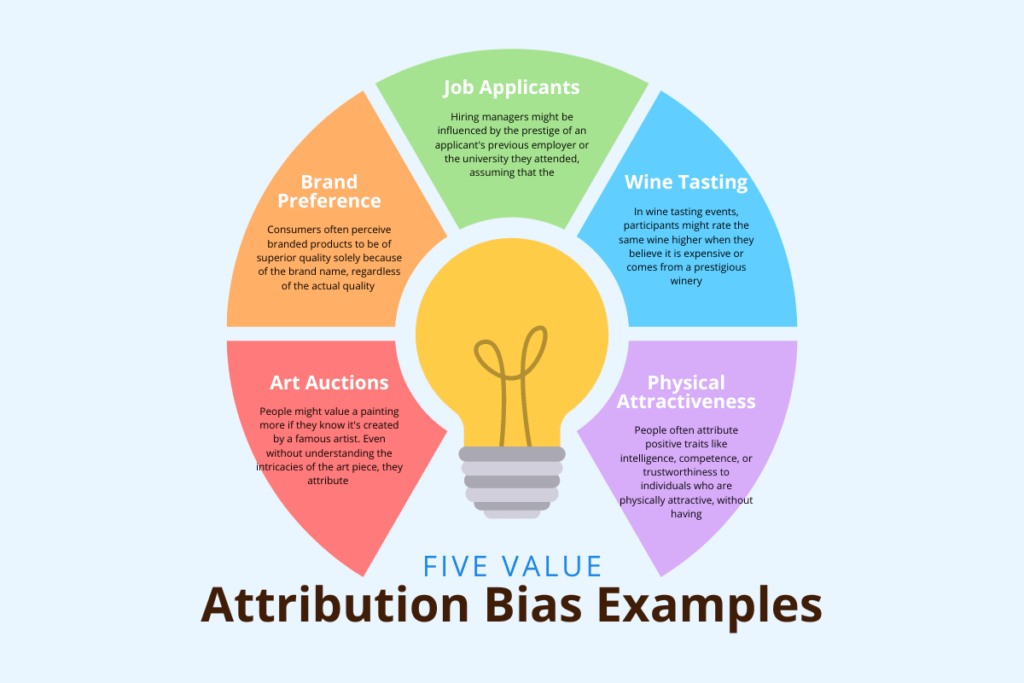Introduction to Value Attribution Bias
Value Attribution Bias: The human mind, though extraordinary in its capabilities, isn’t flawless. In a world awash with information, our brains have devised a multitude of shortcuts to facilitate quicker decision-making, and sometimes, these shortcuts can lead us astray. These mental shortcuts are often referred to as cognitive biases, which are systematic errors in thinking that affect the decisions and judgments that people make. One such cognitive bias is the ‘Value Attribution Bias‘. It is an integral, yet overlooked, aspect of human cognition that significantly influences our everyday decision-making process, social interactions, and economic behavior.
Value Attribution Bias refers to our inclination to imbue a person, item, or an event with certain characteristics based on perceived intrinsic properties, rather than concrete information or actual value. This bias is responsible for our tendency to ascribe superior value or quality to something merely because it seems appealing, well-known, or prestigious at a surface level. For instance, people might perceive a painting to be of high value just because it’s exhibited in a renowned gallery, or a wine to be superior just because it’s expensive. Similarly, this bias can also work in reverse, making us undervalue or disregard things that might lack immediate charm or apparent prestige.
This blog post aims to explore the intriguing concept of Value Attribution Bias, delving into its origins and mechanisms, its impacts and implications in various fields, and effective strategies to recognize and mitigate its effect on our decision-making processes. By illuminating the underlying mechanisms and consequences of this bias, we hope to provide a roadmap to more rational and unbiased thinking, enabling individuals and organizations to make decisions that better align with their true values and objectives.
We live in a world where the implications of such cognitive biases are far-reaching, impacting everything from consumer behavior to social interactions and even public policy. Consequently, it is crucial for us to understand these biases, confront them, and learn how to navigate through their influence for better decision-making. Let’s delve deeper into the fascinating world of Value Attribution Bias.
We have written about 125 most common fallacies and biases. Read here
Value Attribution Bias Definition
Value Attribution Bias is a type of cognitive bias where individuals assign values and characteristics to a person, object, or situation based on perceived intrinsic properties, rather than objective data or factual information. Essentially, people tend to ascribe more worth or quality to something simply because of subjective or superficial qualities, regardless of its actual value or utility.
5 Value Attribution Bias Examples

Art Auctions
People might value a painting more if they know it’s created by a famous artist. Even without understanding the intricacies of the art piece, they attribute higher value to it simply based on the reputation of the artist.
Brand Preference
Consumers often perceive branded products to be of superior quality solely because of the brand name, regardless of the actual quality or utility of the product. For instance, someone might believe that a dress from a high-end designer is automatically better than a similar one from a lesser-known brand.
Job Applicants
Hiring managers might be influenced by the prestige of an applicant’s previous employer or the university they attended, assuming that the candidate is highly skilled or competent, irrespective of their actual abilities or job performance.
Wine Tasting
In wine tasting events, participants might rate the same wine higher when they believe it is expensive or comes from a prestigious winery, as opposed to when they think it’s a cheaper variant, even if the wine is actually the same in both instances.
Physical Attractiveness
People often attribute positive traits like intelligence, competence, or trustworthiness to individuals who are physically attractive, without having any factual basis for these assumptions. This is known as the “halo effect,” a specific manifestation of value attribution bias.
We have written about 125 most common fallacies and biases. Read here
History of Value Attribution Bias
The concept of Value Attribution Bias is rooted in the broader field of cognitive psychology, which focuses on how people perceive, think, remember, and learn. The phenomenon of cognitive biases, which includes value attribution bias, was first theorized by psychologists Daniel Kahneman and Amos Tversky in the 1970s. Their pioneering work in cognitive biases and heuristics revolutionized our understanding of human decision-making and judgment under uncertainty.
Though value attribution bias wasn’t explicitly named by Kahneman and Tversky, their research into heuristics (mental shortcuts) and biases laid the groundwork for future exploration into this area. The principle underlying value attribution bias—that people’s perceptions and judgments can be influenced by inherent or assumed qualities rather than objective facts—resonates with the broader concepts they introduced.
Academic Studies on Value Attribution Bias
Over the years, many studies have provided insight into the nature and impact of value attribution bias. Here are a few notable ones:

The Influence of Physical Attractiveness: In a famous study by Dion, Berscheid, and Walster (1972), it was found that people ascribe more positive traits to physically attractive individuals, a phenomenon known as the “halo effect”. This is a classic example of value attribution bias, where positive value (in this case, personality traits) is attributed based on a perceived intrinsic quality (physical attractiveness).
Branding and Perceived Quality: A study by Rao and Monroe (1989) showed that brand name influences consumers’ perceptions of product quality. Consumers often attribute higher value to products from well-known brands, even when the actual quality is similar to less famous brands.
The Price-Quality Relationship: In a study by Plassmann et al. (2008), participants tasted identical wines but were told they were different prices. Brain scans showed participants genuinely enjoyed the wine more when they thought it was more expensive, reflecting how perceived value (price) can alter our experiences.
Impact on Social and Economic Behavior: A study by Gneezy et al. (2014) revealed that when people believe they’re using a more expensive product, their performance improves in line with this belief, demonstrating the impact of value attribution bias on behavior.
We have written about 125 most common fallacies and biases. Read here
Value attribution Bias in Workplace
Value attribution bias in the workplace refers to the tendency to perceive a person, object, or situation based on perceived intrinsic properties or qualities, rather than objective information or actual performance. This can manifest in various ways and can impact different aspects of organizational functioning, including hiring decisions, performance evaluations, team dynamics, and leadership.
Value attribution bias example workplace

Hiring Decisions: Recruiters may value an applicant more if they come from a prestigious university or a well-known company, even if their skills and qualifications are the same as other applicants. This is because the perceived value of the university or company is being attributed to the individual.
Performance Evaluations: Supervisors may attribute more value to the work of an employee they like or who is more visible in the workplace, overlooking the contributions of less prominent or less favored employees.
Team Dynamics: Team members might attribute higher competence or leadership abilities to colleagues who are more confident, articulate, or attractive, regardless of their actual skills or contributions to the team. This can impact group dynamics and decision-making processes within the team.
Leadership: Leaders may be judged based on their charisma, confidence, or physical appearance rather than their actual leadership capabilities, strategic thinking, or track record. This can influence who gets promoted to leadership positions and how leaders are evaluated in their roles.
How to overcome Value attribution bias
Overcoming value attribution bias requires conscious effort and self-awareness, as it involves reevaluating our instinctive reactions and judgments. Here are some strategies that can help mitigate the effects of value attribution bias:
Increase Awareness: The first step in overcoming any bias is recognizing its existence. Understand what value attribution bias is and how it can influence your decisions and perceptions.
Question Assumptions: Regularly question your initial reactions and judgments. Are you attributing value based on objective information or are you being swayed by superficial characteristics? What assumptions are you making and why?
Seek Objective Data: Make a concerted effort to seek objective information and evidence before making decisions or forming judgments. This can be particularly helpful in situations like hiring or performance evaluations in a workplace context.
Broaden Perspectives: Make an effort to consider different perspectives and opinions. Consult others before making important decisions and be open to their insights and input.
Practice Mindfulness: Mindfulness can help you become more aware of your thought processes and reactions, allowing you to recognize when you’re falling into the trap of value attribution bias.
Encourage Diversity: A diverse environment, whether it’s in the workplace or in your social circle, can expose you to a range of perspectives and experiences, helping to challenge your biases and assumptions.
Education and Training: Regular training on cognitive biases and their impacts can be beneficial, particularly in a workplace setting. This can help individuals recognize and mitigate not only value attribution bias, but also other cognitive biases.Anchoring Bias
Samrat is a Delhi-based MBA from the Indian Institute of Management. He is a Strategy, AI, and Marketing Enthusiast and passionately writes about core and emerging topics in Management studies. Reach out to his LinkedIn for a discussion or follow his Quora Page

